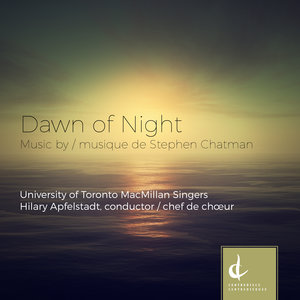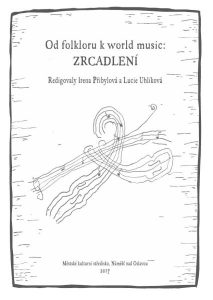Composer: Stephen Chatman
Publisher: Galaxy Music Corporation
Author: Roeder, John
Publication details: Presented at the Society for Music Theory 40th Annual Meeting in Arlington, Virginia, 3 November 2017
Weblink: https://societymusictheory.org
Abstract: Chen Yi’s Ba Ban (1999) for solo piano, like many works of Western-trained Chinese composers, situates fragments of evocative traditional folk melody within a post-tonal discourse that is well described by transformation theory. The eponymous qupai (“named tune”) that it quotes is a standard of the sizhu (“silk – and – bamboo”) repertoire of Jiangnan and elsewhere (Thrasher 1989). In sizhu performance practice, the evenly pulsed rhythm of the 68 – beat melody is greatly augmented and each pitch is highly “flowered,” that is, decorated. Even the plain version of the tune has a distinctive temporality that arises from its multivalent grouping structure (Roeder 2011), but the partly improvised flowering process also affords special sensations of time that are simultaneously unpredictable locally yet highly directed across longer timespans. Chen’s piece, often simulating the timbral quality of siz hu heterophony with mistuned octaves, reproduces some of these temporal qualities by quoting distinctive phrases and elaborating their pitches. Intermingled with this discourse, though, it presents multilinear threads of motivic transformation through virtuoso figurations typical of Western piano repertoire. This paper examines how the distinctive pitch, rhythmic, and grouping continuity of the tune sometimes takes command of the otherwise transformational temporality of these post-tonal materials, while at other times the transformational logic fractures and absorbs it. Without presuming compositional intent, but in tribute to the 30th anniversary of the SMT CSW, I suggest how this hybridity might resonate with some ideas of third – wave feminist theory.
Author: Roeder, John
Publication details: Presented at the Society for Music Theory 40th Annual Meeting in Arlington, Virginia, 3 November 2017
Weblink: https://societymusictheory.org

Composer: Steven Chatman
Ensemble: University of Toronto MacMillan Singers
Recording details: CMC Centrediscs, 2017
Author: Law, Hedy
Publication details: The Oxford Handbook of Music Censorship, edited by Patricia Hall. New York, NY: Oxford University Press, 2017.
Weblink: http://oxfordhandbooks.com
Abstract: This article examines music censorship in the Old Regime France by focusing on the politics of theater. More specifically, it analyzes the politics of silence in eighteenth-century pantomime, a type of theatrical dumb show made popular by the Forains. As an example, it considers Les Oracles d’Harpocrate, ou le dieu du silence à la foire by Charles-François Pannard, performed by the troupe Nouveau Spectacle-Pantomime in August 1746. The article shows how Pannard’s pantomime politicizes silence by featuring Harpocrates, the Egyptian god of silence. Using Harpocrate as a trope indicative of a culture of politicized silence, this essay offers a putative model correlating silence and singing, arguing that Harpocrates helps explain silence as a counter-censorship strategy in late eighteenth-century French operas and plays, including Beaumarchais’s Figaro plays and his opera Tarare (1787).
Author: Metzer, David
Publication details: Cambridge University Press, 2017.
Weblink: https://cambridge.org
Abstract: While ballads have been a cornerstone of popular music for decades, this is the first book to explore the history and appeal of these treasured songs. David Metzer investigates how and why the styles of ballads have changed over a period of more than seventy years, offering a definition of the genre and discussing the influences of celebrated performers, including Frank Sinatra, Aretha Franklin, and Whitney Houston. The emotional power of the ballad is strongly linked to the popular mood of the time, and consequently songs can tell us much about how events and emotions were felt and understood in wider culture at specific moments of recent American history. Tracing both the emotional and stylistic developments of the genre from the 1950s to the present day, this lively and engaging volume is as much a musical history as it is a history of emotional life in America.
Author: Hesselink, Nathan
Publication details: Popular Music 36, no. 3 (2017): 446-48.
Weblink: https://cambridge.org
Author: Julia Ulehla
Publication details: In From Folklore to World Music: Reflections, edited by Irena Přibylová and Lucie Uhlíková, 119-31. Náměšt nad Oslavou: Municipal Cultural Center, 2017.
Weblink: folkoveprazdniny.cz

Description: According to mythologist Martin Shaw, folk tales are not the “penned agenda of one brainrattled individual” who employs “the most succulent portions of the human imagination” to author them. Rather, he says, they emerge from humans listening to the thinking of the earth itself, and a kind of echo-locating in which the earth “transmits pulses, coded information, lucid image, and then sits back to see what echoes return from its messaging” (2016). Expanding Shaw’s notion—of earth-as-author, humans-as-resounding-translators— to folk song, and narrowing the field to South Moravian folk song as case study, this article explores several ways in which this notion might be true. Nineteenth and early twentieth century Czech/Moravian scholarship emphasized the connection between folk song and its ecological conditions (Sušil, Janáček, Úlehla), and song texts often feature animals, ancestor spirits, and the sentient earth as animate, speaking characters. I employ an experiential, practice-based research to explore these themes, bringing South Moravian traditional songs into cross-cultural heritage sharing encounters with individuals from Indigenous land-based, oral cultures (Cree, Anishinaabe, Syilx, Métis, Haida, Musqueam, others). The result is a meditation on sustainability derived from song, wherein land-based song traditions offer an alternative to the human centric hubris of the anthropocene.